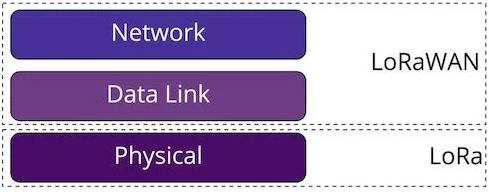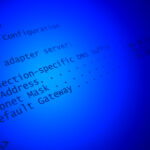Many things push the Industrial Internet of Things (IIoT) further; one among them is LoRa—a proprietary wireless communication technology developed and owned by Semtech Corporation, which stands for extended range. The key characteristics of LoRa are super long range, low power consumption, data encryption, multiple usage, and low cost. With coverage of up to 10 Km, LoRa is an excellent communication solution for wireless IoT networks. Things deployed far apart can carry out frequent low-bandwidth data exchange via LoRa without draining their batteries. LoRa is a physical layer technology providing wireless modulation but alone lacks networking capability. A network management protocol is required for wireless connectivity among devices or things. Here, LoRaWAN fills the gap. LoRaWAN is a network layer protocol maintained by LoRa Alliance to manage data communication over wireless LoRa networks.
LoRa has been around for some time. It gained attraction in the IoT market when Semtech Corporation introduced low-power LoRa chips. IoT devices need to operate at minimal power footprints. Common wireless technologies are either not energy efficient in the context of IoT, like WiFi, or too short ranged like the case of Bluetooth. LoRa plus LoraWAN solves both issues. It provides a super long-range wireless connectivity at a power expenditure that can be easily afforded even by small batteries.
What is LoRa?
LoRa, or Long Range, is a proprietary wireless technology that operates in a license-free radio frequency spectrum. It is based on chirp spread spectrum technology providing super long-range wireless communication at the cost of narrow bandwidth. The data is communicated onto a central frequency by modulating a narrow-band waveform. The information is encoded on waveform using chirp pulses, making it robust to any interference. The radio frequency band used for encoding data depends upon the location. LoRa uses a 902~928 MHz band in North America, 863~870 MHz in Europe, 865~867 MHz in India, 920~923 MHz in South Korea, 915~928 MHz in South America, and 923 MHz in Asia.
LoRa is suitable for transmitting small amounts of data at low bitrates (~27 Kbps) over long distances. At minimal power expenditure, LoRa can communicate data at a range higher than WiFi, Zigbee, and Bluetooth. The typical range of a LoRa network lies between 2~8 Km depending upon terrain. The data rates in a LoRa network can be boosted by using a 2.4 GHz frequency that also falls in the ISM band. LoRa is a physical layer standard encoding and decoding data over a transceiver chip. It does not include network management like network traffic management or communication between endpoint devices.
LoRa is based on Chirp Spread Spectrum (CSS) technology, similar to FSK modulation. It uses chip pulses for modulating carrier waveform. Chirps are signals or pulses with a frequency that moves up and down at different speeds. The upped frequency is called up-chirp, and the down frequency is called down-chirp. The rate of moving between up-chirp and down-chirp is determined by the spreading factor (SF). The higher the spreading factor, the longer the communication and power consumption range. A lower spreading factor is shorter in range but is faster in communicating data over the same bandwidth and period. The number of chirps sent per second can be adjusted by tuning the spreading factor. Lower is the spreading factor; more chips can be sent per signal, though at the cost of signal sensitivity.
Each bit of information is encoded by multiple chirps on the waveform. So as “spread spectrum” is used for encoding each bit, the signals are robust to any kind of channel noise or interference. The desired power consumption vis-a-vis range can be adjusted by selecting a proper combination of spreading factor and modem transmission power (2~20 dBm). The spreading factor and the variable bandwidth used for the LoRa signal determine the data rate. The following table illustrates a trade-off between range and data rate according to the spreading factor.
What is LoRaWAN?
LoRaWAN is a Low Power Wide Area Network (LPWAN) protocol that works with LoRa-based modulation. While LoRa is a physical layer modulation technique, LoRaWAN is a communication protocol. LoRa is responsible for encoding and modulation of carrier signals between LoRa transceivers establishing a peer-to-peer bidirectional link between the LoRa devices. It does not include any protocol for managing devices within the network or establishing communication between the LoRa device and internet servers or cloud services. LoRaWAN is a data link (Media Access Control) layer and network layer protocol to operate over LoRa modulated signal.
LoRaWAN is responsible for configuring LoRa devices as nodes or gateways. At the data link layer, the protocol is responsible for handling node-to-node communication. It identifies LoRa devices by unique MAC addresses and configures network parameters. At the network layer, it is responsible for communicating and processing data across the local network with a server or cloud service. LoRaWAN is designed to exploit features of LoRa technology and ensure interoperability between LoRa networks spread across the globe. It handles traffic management and data communication between endpoint devices within a LoRa network and communication of the LoRa network with the internet. It is also responsible for encrypting data between LoRa devices.
Other MAC layer protocols also exist to work with LoRa modulation, like Symphony Link, but none is as popular as LoRaWAN. LoRaWAN is an open protocol maintained by LoRa Alliance.
LoRa vs. LoRaWAN
Often, LoRa and LoRaWAN are referred to interchangeably. LoRa is a wireless hardware technology, while LoRaWAN is a network layer protocol. Indeed, LoRaWAN operates over LoRa devices and networks. The opposite may not always be true. There are other network layer protocols, like Symphony Link, to configure and manage LoRa devices in a network. LoRa devices are configured and managed into a network in many places by do-it-yourself LPWAN. So, it is possible to set up the LoRa network without LoRaWAN using other proprietary or do-it-yourself protocols. LoRaWAN is one of the many software protocols that can aggregate LoRa devices into an operational network. LoRa is a hardware technology operating at the physical layer of the network or at the device level.
LoRa Vs. Other wireless technologies
Both cellular and non-cellular technologies are used in IoT depending upon the use case. Among non-cellular technologies, LoRa is the only wireless communication solution that provides a super long range at a small power footprint. It offers the longest coverage compared to WiFi, Bluetooth, and Zigbee. However, it gives the lowest data rates among all.
LoRa is a low-power, long-range, low bandwidth, highly secure, a noise-free wireless solution suitable for outdoor IoT networks. It is the best solution to connect things powered by batteries and deployed far apart over a few kilometers, requiring frequent but low bandwidth data communication. WiFi and Zigbee can be considered the best solutions for indoor applications. Bluetooth suits best for short-range wireless communication with accessories and peripherals.
Lora stands out in terms of range and energy efficiency compared to other non-cellular wireless technologies; it is facing strong competition with cellular technologies like NB-IoT and LTE-M that offer similar ranges and are continuously reducing their power footprint.
Why LoRaWAN?
There are several reasons to choose LoRaWAN for an IIoT application. LoRaWAN offers an exceptional range of up to 10 Km in rural and 3 Km in urban localities that no other non-cellular technology is capable of. The range is provided without costing power efficiency. A battery-powered LoRa device runs for a decade on a coin cell operating most of its lifetime in low-power modes. It is an open protocol that costs nothing for a license, like WiFi and Bluetooth. A LoRa network can accommodate thousands of gateways without choking. Lora is free from interference based on a license-free radio spectrum. Data communication over LoRaWAN is highly secure with AES-128 encryption. Plus, the devices within a LoRa network can be easily located using triangulation. With seamless roaming among different Lora networks, public and private LoRaWAN networks can be set up using the same hardware and software tools. LoRa networks require minimal infrastructure and can be built using lost cost hardware. The protocol itself is open and license-free.
Disadvantages of LoRa
The most significant disadvantage of Lora and LoRaWAN is the low data rate because the technology uses a narrow bandwidth. LoRaWAN is the slowest among all non-cellular technologies like WiFi, Zigbee, and Bluetooth. The data rates are typically limited to 27 Kbps. This restricts the use of LoRaWAN for sensor networks. They are streaming any data over LoRaWAN is impossible. LoRa can only communicate small packets of data, though the delivery can be frequently done over a super long range.
LoRa Alliance
LoRa Alliance maintains the LoRaWAN protocol. The LoRa Alliance is an open, non-profit association of more than 500 member companies that supports the development of LoRaWAN protocol and ensures interoperability among all LoRaWAN technologies and products. Established in 2015, it also provides certification to LoRaWAN end devices. Only members of the LoRa Alliance can be certified LoRaWAN device manufacturers. The member directory of LoRa Alliance is a great place to look for companies providing LoraWAN-based vertical-specific services and products.
LoRaWAN standard
In 2021, LoRaWAN was officially approved as ITU (International Telecommunication Union) international standard for LPWAN.
Applications of LoRaWAN
LoRaWAN is best suited for outdoor IoT networks like smart cities, farms, and IIoT. LoRaWAN is also useful for wireless connectivity in multi-story buildings. Though, it can only be used for sensor networks or embedded IoT applications. Due to low data rates, it cannot be used for catering internet services as WiFi does.
You may also like:
Filed Under: IoT applications, Tutorials









Questions related to this article?
👉Ask and discuss on Electro-Tech-Online.com and EDAboard.com forums.
Tell Us What You Think!!
You must be logged in to post a comment.